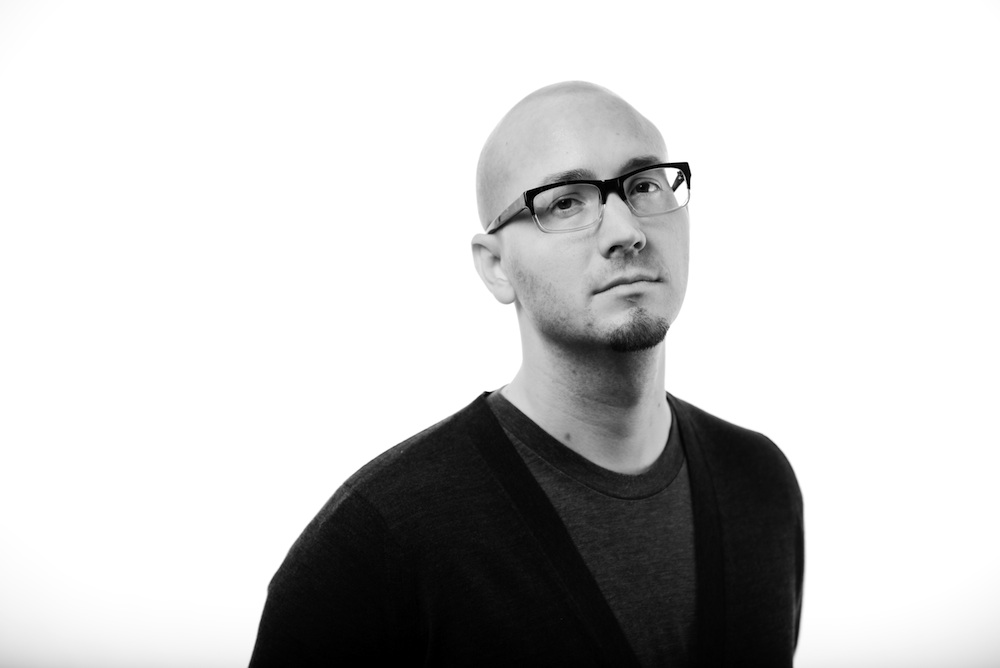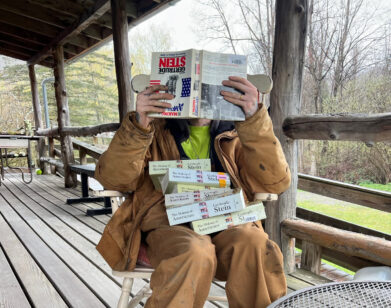L.A.’s History of Violence

ABOVE: RYAN GATTIS. PHOTO COURTESY OF SAM TENNEY
The image of burning palm trees on the cover of Ryan Gattis’ riveting new novel is almost as indelible as the grainy footage of a group of LAPD Police officers beating up motorist Rodney King, which sparked the 1992 L.A. Riots. Titled All Involved (Ecco), the book examines the effects of the riots on the interconnected lives of characters on the periphery—from Latino gang bangers to Korean storeowners and first responders—caught up in the maelstrom of brutality, crime, and survival during the six days of violence. It’s a propulsive, sun-baked, blood-soaked read that captures one of the most turbulent times in recent Los Angeles history. It’s all the more remarkable an achievement considering Gattis, a mild mannered former university lecturer, was barely in high school, in Colorado, at the time three LAPD officers who assaulted King were acquitted.
JEFF VASISHTA: All Involved is brutally violent but you hail from a middle class family in Colorado.
RYAN GATTIS: I’m from a military family. My grandfather was a colonel in the air force. My dad was a captain. Originally the plan was for me to go to the Air Force Academy. I was on that path if not for a fairly horrific occurrence that happened when I was 17 at high school. I was struck in the face by a football player who was tripping on acid at the time. I was hit so hard and at such an angle that it actually tore my nose out of my face. I had to have two facial reconstruction surgeries. That completely changed my priorities and what I wanted out of life. Although I’d been on track to apply to the air force academy, I wasn’t interested in it any more. It took more than a year to recover. Violence for me is a completely normal thing. I’m a survivor. I understand it intimately. It’s about recovery and understanding who you are afterwards. When I write it I write from that place of consequences.
VASISHTA: You weren’t living in L.A. at the time of the riots. What attracted you to them in terms of subject matter?
GATTIS: I spent five years researching, writing, and rewriting a novel set in Japan. The book never came out. At one point it was over 170,000 words long. It was a failure on every level—pace-wise and character-wise, even though my agents really tried hard to sell it. I hadn’t been interfacing with the world—just sitting in a room and writing—and when I finally got back to L.A. I was a mess, but it opened me up to different things. Going out and meeting people, I met UGLAR [Unified Group Of Los Angeles Residents], the street art crew in L.A., and was introduced to Espi [from UGLAR] there. We clicked immediately. People liked my first novel, Kung Fu High School, but I told Espi that I wanted to write about gangs more authentically. We were driving home from a mural site and I was dropped off at my house and he said, “There’s a couple of people you need to meet.” It ended up leading me on a fantastic journey. I was introduced to former gang members. I had no agenda for three to four months. I was just curious. We were just speaking informally.
VASISHTA: What really stands out about the novel are the details: the lives of the characters from the gangsters to Gloria the nurse and Anthony the fireman, the description of the violence, the music being played—even the guns used.
GATTIS: I spoke to a lot of people. I needed to go over what was important in ’92 down to the music. The thing that really set my brain alight as a “white boy from Colorado,” which I was called a number of times, was the history of L.A. and how things were tied together in a messy, combustible way. Everyone I spoke to had respect for Evan [Skrederstu] and UGLAR as a crew, so I got a lot of honesty. A firefighter told me that in ’92, the U.S. Navy Seals did their medical training with the L.A. Fire Department because of the volume of combat injuries they saw. It was so ripe for fiction.
VASISHTA: The novel starts with one of the most violent scenes in the book. I understand why it’s there, because the whole plot revolves around it, but did you have reservations about starting from such a shocking place? Did you worry that it might turn people off?
GATTIS: Yes, absolutely I had reservations. I was terrified. I wondered if it might shut people off. But it was a lighting of the wick. It had to be done in a specific, moving way that got to the heart of the character in eight pages. My question was how do I get readers to care enough in a way that would push them through the rest of the novel.
VASISHTA: When people think of L.A. gangs, they think of the Bloods and the Crips. This novel focuses on the Latin gangs, which, as you explained, you had access to. Was there a temptation to include wider gang culture in a similar way to the chapter from the perspective of the Korean student John Kim?
GATTIS: We understand far more what the Bloods and Crips were up to. That story had been told and covered, so I spent my time with the Latin gangs whose story isn’t as well known. Basically there were lots of crimes of opportunity. What’s going on in the shadows, what people were able to get up to in essentially unenforceable law.
VASISHTA: Payasa, the female gangbanger’s character, is interesting because of her complexity. She’s gay, violent, and psychopathic, but there’s also a sense that there’s a better person in there trying to emerge.
GATTIS: It draws on my experience with one of my best friends who I’ve known for over 15 years. You’d hardly know that she grew up in a gang and dealt with what she did. She has a great job; two masters degrees. It was many years before she spoke to me what that was like. That informed who Payasa is at the end of the six days.
VASISHTA: Some of the scenes—particularly the garbage truck being burned under an underpass with dead bodies in it—seem strikingly real. Where did you get the ideas from for that?
GATTIS: It was purely imagination but tempered with a lot of research. Miles Corwin wrote a phenomenal book called The Killing Season. He was embedded with a homicide unit in Compton. It was very much informed by his book. I had people I could speak to as well and run my scenes by. Whatever I’d written that day I read to my wife when she got home from work. She was raised on Jane Austin and Dickens and Agatha Christie, so plot was foremost in her mind. She’s a teacher at Performing Arts High School but she’s also a lawyer and used to work at the L.A. D.A.’s office. I had a magnificent support system—L.A. firefighters, gang members, and my wife, who had experience with criminal law.
VASISHTA: The L.A. Riots encapsulate a period in L.A. street culture that coincided with the rise of gangster rap, likw N.W.A., which is now viewed nostalgically because the music was so good, but it was also a very brutal time. Do you worry that that some people will look your book as a glorification of violence?
GATTIS: I was at a wedding in Hawaii and an L.A. fireman was there who had heard from the other guests that I was writing a book based around the L.A. Riots. He was worried that potentially I was glorifying it—demonizing the authorities and glorifying the gang members—so he got in my face to make sure I got my facts right. I stayed calm and listened and assured him his fears were misplaced. We ended up having a wonderful exchange and we stay in touch to this day. He influenced Day 3 in the novel. The novel is violent and that violence has consequences. That’s what interests me.
ALL INVOLVED IS OUT TODAY, APRIL 7, VIA ECCO.






